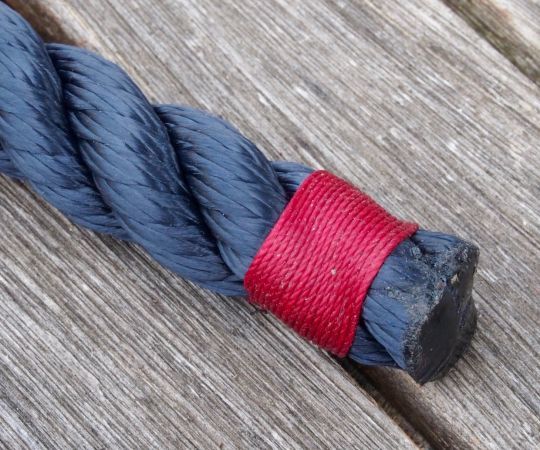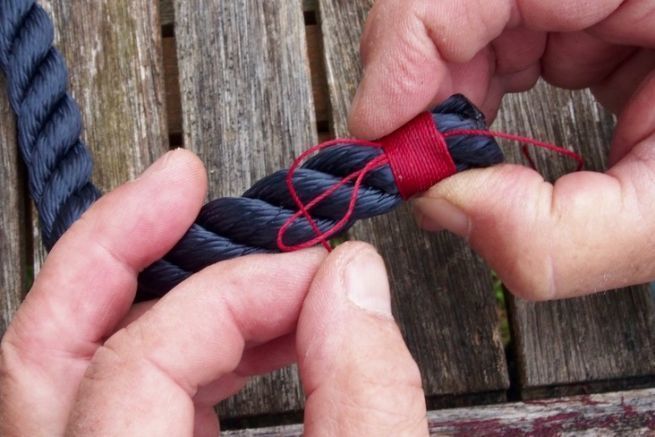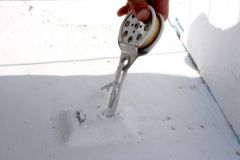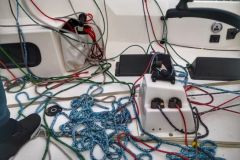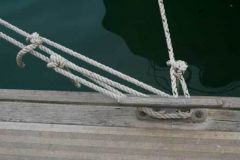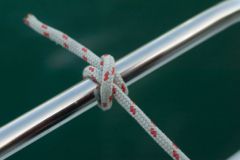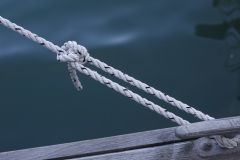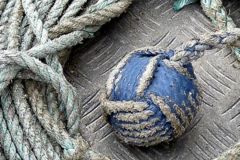An overbinding can be made on any rope, whether it is stranded, braided or composite. There are several forms, sometimes sewn, that can be adopted depending on the type of rope and its use.
A basic material
The necessary material is limited to a good knife and some sail wire or fine garcette. The one we use is waxed. A lighter will allow to weld the ends of the wire at the end of the work.
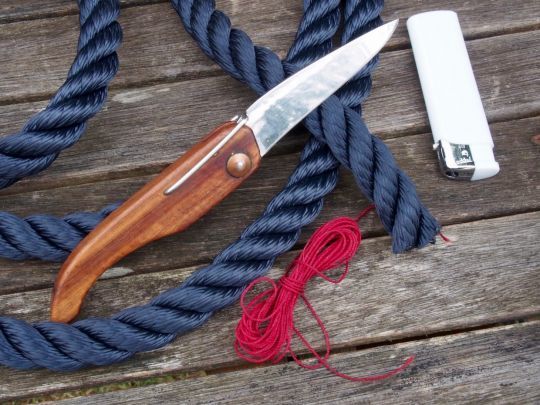
Place the braid
Form a loop of sufficient size with the end of the sail line and place it on the rope. Hold it in place between your thumb and forefinger while you position the first turns...
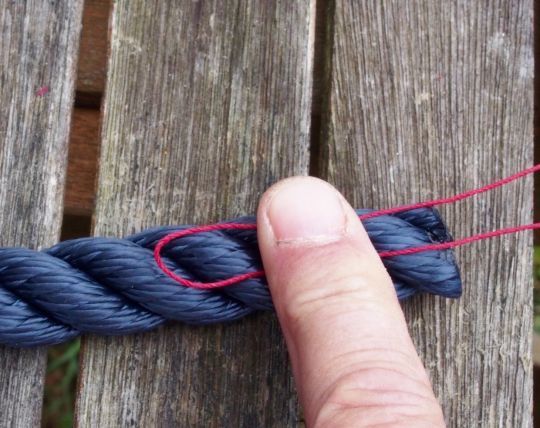
Jointed coils
Wrap the sail line in tight turns around the braid. Throughout your work, keep the thread taut. The strength of your surliure depends on this tension and the good stop of the ends of the thread which will be stuck under the turns at the end of the work.
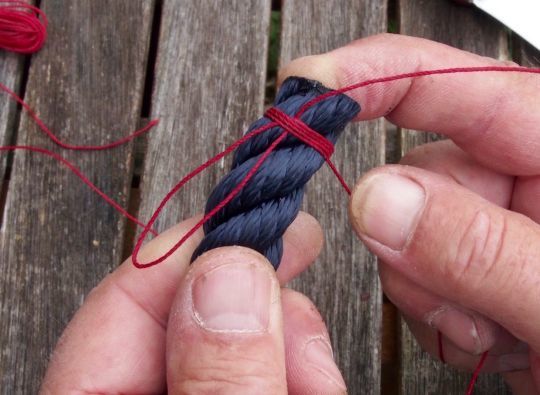
Which size of overbinding?
There is no specific rule for the length of the overbraid. When it is simply a matter of preserving the end of a rope from fraying, a length equivalent to the diameter of the rope is sufficient.
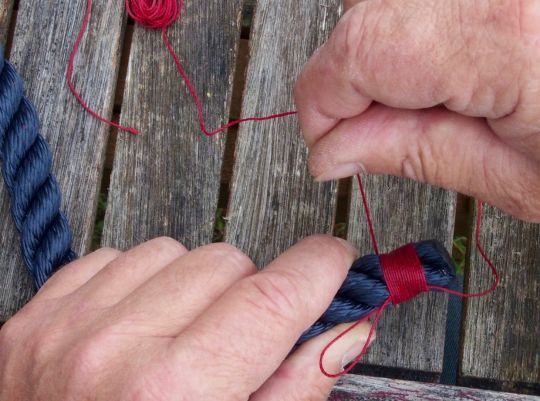
Keeping the tension
Once you have made the desired number of turns, cut the end of the sail line and insert the free strand into the loop of the braid. In order not to lose the benefit of your efforts, keep the coils taut between your fingers.
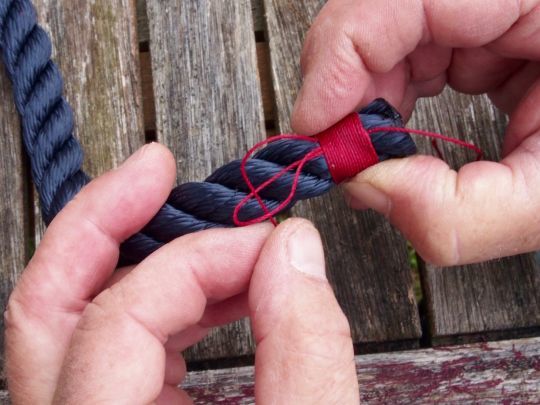
An invisible stop
Pull on the loose end to close the braid and trap the end of the last turn. Holding one end of the thread in each hand, pull enough to bury this connection under the coils without going too far so that the connection does not come out the other side, ruining your efforts.
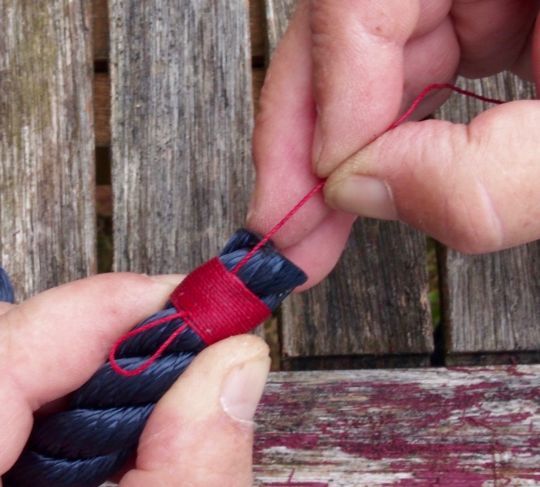
Long-lasting protection
Cut off the excess thread and briefly heat the ends with a lighter. This will keep your lines from fraying for a long time. This system does not form a thick layer that could interfere with the passage through a pulley.
